| Author |
 Topic Search Topic Search  Topic Options Topic Options
|
wbecker 
Orange Level

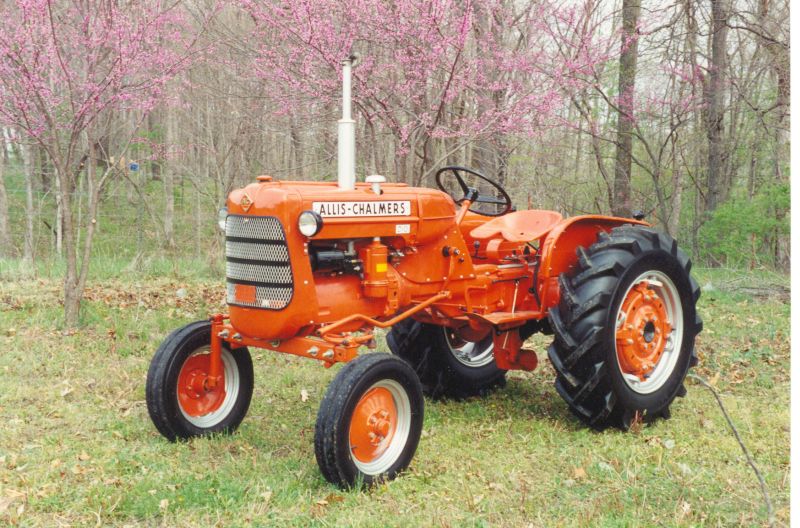
Joined: 29 Oct 2009
Location: STL
Points: 837
|
 Post Options Post Options
 Thanks(0) Thanks(0)
 Quote Quote  Reply Reply
 Topic: Compressoin ratios Topic: Compressoin ratios
Posted: 25 Apr 2012 at 4:46pm |
How did they change compression ratios on the little engines, like the BE/CE/D10/12,138,149, and the D14/15s?
I know when they increased the bore the compression goes up, but there were different ratios with the same bore. Did they have different pistons? Heads?
For instance, how did they get 6.25 CR on the CA engine, when the CE (same bore 125 CI) had 5.75?
Thanks, Bill b
|
|
Allis B, IB, Low B, G, D10, JD M, 8KCAB, C152
|
 |
|
Sponsored Links
|
|
 |
mlpankey 
Orange Level

Joined: 13 Sep 2009
Location: Vols country
Points: 4580
|
 Post Options Post Options
 Thanks(0) Thanks(0)
 Quote Quote  Reply Reply
 Posted: 25 Apr 2012 at 6:27pm Posted: 25 Apr 2012 at 6:27pm |
|
Most ideally think it would be the piston. But without ccing every heads combustion chambers of every engine in question. Allis could have very well reduced the ccs of the combustion chamber as well.
|
 |
CTuckerNWIL 
Orange Level

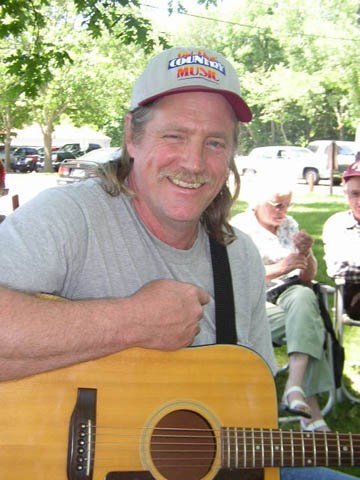
Joined: 11 Sep 2009
Location: NW Illinois
Points: 22825
|
 Post Options Post Options
 Thanks(0) Thanks(0)
 Quote Quote  Reply Reply
 Posted: 25 Apr 2012 at 8:00pm Posted: 25 Apr 2012 at 8:00pm |
 wbecker wrote: wbecker wrote:
How did they change compression ratios on the little engines, like the BE/CE/D10/12,138,149, and the D14/15s?
I know when they increased the bore the compression goes up, but there were different ratios with the same bore. Did they have different pistons? Heads?
For instance, how did they get 6.25 CR on the CA engine, when the CE (same bore 125 CI) had 5.75?
Thanks, Bill b |
Larger pistons could very easily have a lower com ratio. The higher ratio comes from more of the piston above the wrist pin or less chamber in the head(milling the head off some). Most likely the original engines just had a different piston with the wrist pin farther away from the top.
|
|
|
 |
MNLonnie 
Orange Level

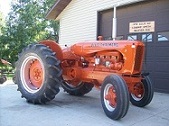
Joined: 11 Sep 2009
Location: Baxter MN
Points: 4791
|
 Post Options Post Options
 Thanks(0) Thanks(0)
 Quote Quote  Reply Reply
 Posted: 25 Apr 2012 at 8:54pm Posted: 25 Apr 2012 at 8:54pm |
|
Hey Bill, someone on the other forum was looking for you or anyone with a low rider B.
|
|
Waukesha B, B, IB, G, styled WF, D15, 615 backhoe, 2-Oliver OC3's, 4 Ford Model T's, 3 Model A Fords, AV8 Coupe, AV8 Roadster, 1933 Ford Wrecker
|
 |
mlpankey 
Orange Level

Joined: 13 Sep 2009
Location: Vols country
Points: 4580
|
 Post Options Post Options
 Thanks(0) Thanks(0)
 Quote Quote  Reply Reply
 Posted: 26 Apr 2012 at 7:03am Posted: 26 Apr 2012 at 7:03am |
Since the bore squares in the cubic inch displacement formula . In all cases bigger bores pull more air . more air compressed to the same height naturally means more compression. This is also why when evaluating performance cylinder head airflow advertised numbers one should take note of the flow bench bore size that advertised numbers were taken from. A 260 cfm head @28 inches at .600 lift on a 4 inch bore fixture is a better performer than a 260 cfm head @28 inches at .600 lift on a 4.25 inch bore fixture.
|
 |
DaveKamp 
Orange Level Access

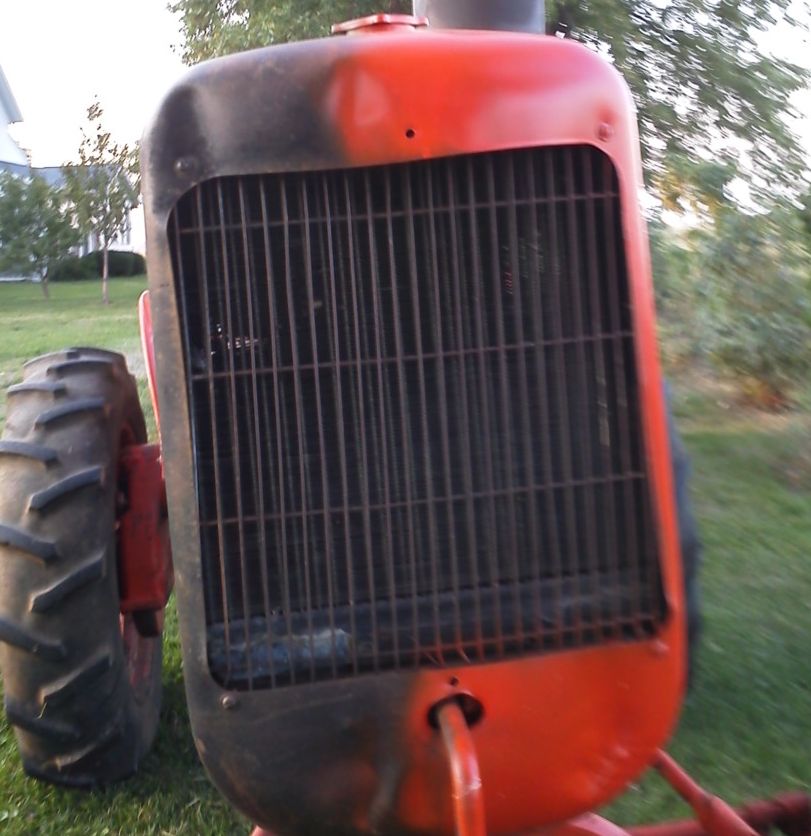
Joined: 12 Apr 2010
Location: LeClaire, Ia
Points: 6066
|
 Post Options Post Options
 Thanks(0) Thanks(0)
 Quote Quote  Reply Reply
 Posted: 26 Apr 2012 at 2:14pm Posted: 26 Apr 2012 at 2:14pm |
|
Since he didn't ask anything regarding airflow ratings, advertised numbers, flowbench bore sizes inches of draught or valves...
Compression ratio is a very simple thing: Initial volume (piston down, including volume of the chamber) and final volume (piston up, including volume of chamber).
The difference between engines and CR was typically the result of either a piston design (Compression Height - wrist pin location) and the shape of the top of the piston (dish, dome, or flat), and the amount of volume found in the cylinder head... and a small amount granted by presence of the head gasket. Another possible variation is the length of connecting rod, but it wasn't typical for Allis to change conrod lengths to alter compression ratios.
Typically, compression-ratio variations WITHIN a model existed for fuel-tolerance issues. Low-grade fuels (down to 82) and multifuel operation warranted lower CR, while gaseous fuels (Propane) would work better at higher CR levels. As a result, the compression ratio wasn't an 'option', but rather, would be varied to suit the fuel-choice options... and frequently, the fuel-choice options were a regional-market thing.
|
 |
mlpankey 
Orange Level

Joined: 13 Sep 2009
Location: Vols country
Points: 4580
|
 Post Options Post Options
 Thanks(0) Thanks(0)
 Quote Quote  Reply Reply
 Posted: 26 Apr 2012 at 2:29pm Posted: 26 Apr 2012 at 2:29pm |
 DaveKamp wrote: DaveKamp wrote:
Since he didn't ask anything regarding airflow ratings, advertised numbers, flowbench bore sizes inches of draught or valves...
Compression ratio is a very simple thing: Initial volume (piston down, including volume of the chamber) and final volume (piston up, including volume of chamber).
The difference between engines and CR was typically the result of either a piston design (Compression Height - wrist pin location) and the shape of the top of the piston (dish, dome, or flat), and the amount of volume found in the cylinder head... and a small amount granted by presence of the head gasket. Another possible variation is the length of connecting rod, but it wasn't typical for Allis to change conrod lengths to alter compression ratios.
Typically, compression-ratio variations WITHIN a model existed for fuel-tolerance issues. Low-grade fuels (down to 82) and multifuel operation warranted lower CR, while gaseous fuels (Propane) would work better at higher CR levels. As a result, the compression ratio wasn't an 'option', but rather, would be varied to suit the fuel-choice options... and frequently, the fuel-choice options were a regional-market thing. |
Seams like he stated in his post increasing bore size raised compression. Dont recall him asking about fuel though either..... Seams we all have our tangents dont it that we run off on . How does rod length increase compression ? Cam advancing or retarding will affect compression altitude etc.
Edited by mlpankey - 26 Apr 2012 at 2:37pm
|
 |
wbecker 
Orange Level


Joined: 29 Oct 2009
Location: STL
Points: 837
|
 Post Options Post Options
 Thanks(0) Thanks(0)
 Quote Quote  Reply Reply
 Posted: 27 Apr 2012 at 6:31pm Posted: 27 Apr 2012 at 6:31pm |
I understand CR and how it CAN be changed.
What I was asking was, how did AC change compression ratios on different models of the 125 cubic inch engines. Looks like they went from 5.2 or 5.75 in the CE engine to 6.25 in the CA engine.
Thanks, Bill B
|
|
Allis B, IB, Low B, G, D10, JD M, 8KCAB, C152
|
 |
CTuckerNWIL 
Orange Level


Joined: 11 Sep 2009
Location: NW Illinois
Points: 22825
|
 Post Options Post Options
 Thanks(0) Thanks(0)
 Quote Quote  Reply Reply
 Posted: 27 Apr 2012 at 8:06pm Posted: 27 Apr 2012 at 8:06pm |
|
Different piston. The C's CA's and late B's all used the CE engine.
Edited by CTuckerNWIL - 27 Apr 2012 at 8:42pm
|
|
|
 |
Brian Jasper co. Ia 
Orange Level

Joined: 11 Sep 2009
Location: Prairie City Ia
Points: 10508
|
 Post Options Post Options
 Thanks(0) Thanks(0)
 Quote Quote  Reply Reply
 Posted: 27 Apr 2012 at 8:13pm Posted: 27 Apr 2012 at 8:13pm |
|
When I rebuilt an engine for my CA, I bought a buildable core that had cast iron pistons in it. I reused the head and noticed the original to me CA engine had aluminum pistons. I'd have to look again to be sure, but I believe Norm Swinford's book comments on the CA having aluminum higher compression pistons.
|
|
"Any man who thinks he can be happy and prosperous by letting the government take care of him better take a closer look at the American Indian." Henry Ford
|
 |
DaveKamp 
Orange Level Access


Joined: 12 Apr 2010
Location: LeClaire, Ia
Points: 6066
|
 Post Options Post Options
 Thanks(0) Thanks(0)
 Quote Quote  Reply Reply
 Posted: 27 Apr 2012 at 9:44pm Posted: 27 Apr 2012 at 9:44pm |
|
Yes, piston design. Shallower 'dish' for dished pistons, taller dome for domed pistons, and 'compression height' (distance from piston top to wrist pin center) on all.
There was no appreciable cylinder head 'chamber volume' change, because Allis's valve-in-head design centered around a volumeless chamber... flat. The 'hemispherical' chamber design was the result of dished pistons.
In answer to Panky's question: Extending the connecting rod locates the piston's minimum and maximum travel farther UP the bore, which makes the 'final' volume smaller by the equivalent displacement of the extension distance. Why he asked, is beyond me- it's not proprietary knowledge.
Edited by DaveKamp - 27 Apr 2012 at 9:45pm
|
 |
Rod B 
Orange Level

Joined: 25 Jul 2011
Location: Peoria
Points: 415
|
 Post Options Post Options
 Thanks(0) Thanks(0)
 Quote Quote  Reply Reply
 Posted: 28 Apr 2012 at 10:50am Posted: 28 Apr 2012 at 10:50am |
The heads in topic all have the same chamber. It was a change in piston compression height and top that changed the compression ratios in these engines.
pankey was proud of his picture pulling with the front end in the air and the tractor on the bars. It would make the tires spin easy, in turn makeing him feel like it had power.
Now he's off on the flow bench tangent, something he knows nothing about by the looks of things. Alwayse worried about insignificant numbers rather than what really matters within the port itself.
Get ready for more pankey drama.
Edited by Rod B - 28 Apr 2012 at 10:56am
|
 |
BobHnwO 
Orange Level

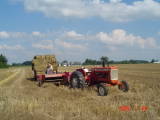
Joined: 16 Sep 2009
Location: Jenera Ohio
Points: 693
|
 Post Options Post Options
 Thanks(0) Thanks(0)
 Quote Quote  Reply Reply
 Posted: 28 Apr 2012 at 12:01pm Posted: 28 Apr 2012 at 12:01pm |
|
HEY Rod B,Quit trying to start trouble on this site,go somewhere else!!
|
|
Why do today what you can put off til tomorrow.
|
 |
mlpankey 
Orange Level

Joined: 13 Sep 2009
Location: Vols country
Points: 4580
|
 Post Options Post Options
 Thanks(0) Thanks(0)
 Quote Quote  Reply Reply
 Posted: 28 Apr 2012 at 2:33pm Posted: 28 Apr 2012 at 2:33pm |
|
When rods length changes most of the time piston pin placement changes. Now if you left the pin at say 2.6 compression height pisron and simply added a 1/8 inch longer rod then yes the cr would go up but if the pin moved a 1/8 inch up toward fhe oil ring no compression height change was made by adding a 1/8 inch longer rod. In other words unless the chanve effects the swept volume it doesnt effect compression another way to affect swept volume is by advancing a camshaft and closing the intake valve sooner abdc of the compression stroke because untill the valve closes any piston movement just pushes the air into the intake thus reducing the cubic inches of air displaced in the cylinder. Once the valves are closed the same cubic inches of air displaced in the cylinder with the upward movement of the piston becomes compressed. The largest amount of air displaced and compressed into the smallest area becomes tbe higher compression ratio.
Edited by mlpankey - 28 Apr 2012 at 2:41pm
|
 |
MikeinLcoMo 
Orange Level


Joined: 12 Sep 2009
Location: west plains mo
Points: 620
|
 Post Options Post Options
 Thanks(0) Thanks(0)
 Quote Quote  Reply Reply
 Posted: 28 Apr 2012 at 2:54pm Posted: 28 Apr 2012 at 2:54pm |
|
I think I'm going to look for taller boots or should I say ones that are longer at the top [over flow area ] in relation to the pivotal area [ ankle ] or find a taller chair to reside in. Jeeze, all the guy wanted to know is what parts they used to change the compression.
|
 |
mlpankey 
Orange Level

Joined: 13 Sep 2009
Location: Vols country
Points: 4580
|
 Post Options Post Options
 Thanks(0) Thanks(0)
 Quote Quote  Reply Reply
 Posted: 28 Apr 2012 at 3:01pm Posted: 28 Apr 2012 at 3:01pm |
|
Camshaft grind profile and pistons one of the two or both for the highest.just like they did on the 226 175 engine.
|
 |
ACEd2010 
Silver Level

Joined: 23 Oct 2010
Location: Bogalusa, La
Points: 84
|
 Post Options Post Options
 Thanks(0) Thanks(0)
 Quote Quote  Reply Reply
 Posted: 28 Apr 2012 at 3:01pm Posted: 28 Apr 2012 at 3:01pm |
|
OK I got tired of the debate and pulled out Dealers Repair Parts Catalog D-26 dated April 1955 and it shows same head and connecting rods. Some differences in crank, but no doubt not different in stroke since that would affect displacement.
Only variation significant to CR were Pistons and Head Gaskets - yes Head Gaskets. On early engines - mostly the 116 CI BE, but also used for the earliest 125 CI variant in the R tractor - they used 2 head gaskets to lower CR for Low Octane (Distillate) fuel.
And the differences in the pistons - as pointed out by another poster would be height from piston pin to top of piston and possibly piston top geometry.
Pistons for early CE Low Octane were 4.7:1 Cast Iron - these would be CE engines with K suffix
Pistons for early CE Low Octane High Altitude were 5.2:1 with both CI and AL variants
Pistons
Pistons for early CE gasoline engines in B & C tractors up to early 1950 were 5.7:1 Cast Iron - presumably these would be the G suffix engines
Pistons for CE gasoline engines in mid 1950 up to s/n CE153961/CR47264 were 5.7:1 Aluminum - presumably the GA suffix engines in early CA and some B tractors
Pistons for late CE gas engines beginning mid-1950 at CE153962/CR47265 were 6.2:1 Aluminum - presumably the PA suffix engines in late CA and B tractors
As for the reasons for CR selection, the Distillate required Low Compression as well as Tractors which did not have Electric Start. Remember some of the early B's were designed to operate on 40 Octane fuel. The early Gas BE engines were only 4.9:1 and the Distillate were 4.6:1. As gas became more consistently higher octane, it was possible to incrementally increase CR and benefit from the increased performance.
Best, Ed
|
 |
mlpankey 
Orange Level

Joined: 13 Sep 2009
Location: Vols country
Points: 4580
|
 Post Options Post Options
 Thanks(0) Thanks(0)
 Quote Quote  Reply Reply
 Posted: 28 Apr 2012 at 3:06pm Posted: 28 Apr 2012 at 3:06pm |
|
Ed check the camshafts as the well.back to the flow bench .tra sfer slots on the old stihl need some attention before the june race.
Edited by mlpankey - 28 Apr 2012 at 3:15pm
|
 |
ACEd2010 
Silver Level

Joined: 23 Oct 2010
Location: Bogalusa, La
Points: 84
|
 Post Options Post Options
 Thanks(0) Thanks(0)
 Quote Quote  Reply Reply
 Posted: 28 Apr 2012 at 3:34pm Posted: 28 Apr 2012 at 3:34pm |
|
Camshafts have NOTHING to do with Compression Ratios
|
 |
mlpankey 
Orange Level

Joined: 13 Sep 2009
Location: Vols country
Points: 4580
|
 Post Options Post Options
 Thanks(0) Thanks(0)
 Quote Quote  Reply Reply
 Posted: 28 Apr 2012 at 3:39pm Posted: 28 Apr 2012 at 3:39pm |
|
It has to do with cylinder psi. Dynamic compression ratio.yes has nothing to do with static compression. Octane could care less about static but does worry about dynamic. The battery and starter are the only thing concerned with static compkpression ratio. Advance the cam cylinder pressure always increases
Edited by mlpankey - 28 Apr 2012 at 3:42pm
|
 |
ACEd2010 
Silver Level

Joined: 23 Oct 2010
Location: Bogalusa, La
Points: 84
|
 Post Options Post Options
 Thanks(0) Thanks(0)
 Quote Quote  Reply Reply
 Posted: 28 Apr 2012 at 3:43pm Posted: 28 Apr 2012 at 3:43pm |
|
And in looking back to the original question, I realize I failed to address the differences in Compression Ratio between the 125 CI CE engine and the larger displacement engines up to the D15.
I am NOT going to pull the research on the D10, D12, D14, D15 - but any time you change DISPLACEMENT everything starts from scratch when you change either Bore or Stroke - the 2 ways to increase displacement. Over time, as gas improved CR continued to increase with each new design.
But as far as I know there are only 4 ways to affect CR without changing displacement - the 2 noted before 1. spacing the head up with a double gasket or 2. changing piston geometry - or 3. changing connecting rod lengths or 4. changing volume in head. I don't remember anyone doing it with rods though that is possible, but others including MM frequently changed head volumes over time to effect CR changes.
|
 |
mlpankey 
Orange Level

Joined: 13 Sep 2009
Location: Vols country
Points: 4580
|
 Post Options Post Options
 Thanks(0) Thanks(0)
 Quote Quote  Reply Reply
 Posted: 28 Apr 2012 at 3:50pm Posted: 28 Apr 2012 at 3:50pm |
|
If the intake valve due to the camshaft doesnt close the intake valve until the piston has moved up the bore 1/4 inch on the compression stroke then the engine lost the air the bore circumference at 1/4 depth would have displaced. More air compreesed to the same hieght has more compresion over the a lesser volume compressed to the same height
|
 |
ACEd2010 
Silver Level

Joined: 23 Oct 2010
Location: Bogalusa, La
Points: 84
|
 Post Options Post Options
 Thanks(0) Thanks(0)
 Quote Quote  Reply Reply
 Posted: 28 Apr 2012 at 3:55pm Posted: 28 Apr 2012 at 3:55pm |
|
Look back to original question - it was about standard CR as defined by AC and everyone else at the time including SAE - he asked about CR of 6.25:1 vs 5.75:1
As I said in my first post on this subject I'm tired of this BS - sorry I took the time to respond.
Best to all the sane members of this list. Ed
|
 |
mlpankey 
Orange Level

Joined: 13 Sep 2009
Location: Vols country
Points: 4580
|
 Post Options Post Options
 Thanks(0) Thanks(0)
 Quote Quote  Reply Reply
 Posted: 28 Apr 2012 at 4:56pm Posted: 28 Apr 2012 at 4:56pm |
|
Yeap its bs when a cam manufacturer tells you need a static of 10to 1 cause his cam knocks it down to 8.5.1 do to the intake valve closing point. This is why cylinder psi isnt a direct relationahip to static cr calculations. For the ones who crave knowledge for the ones who dont consider it bs.
Edited by mlpankey - 28 Apr 2012 at 4:57pm
|
 |
mlpankey 
Orange Level

Joined: 13 Sep 2009
Location: Vols country
Points: 4580
|
 Post Options Post Options
 Thanks(0) Thanks(0)
 Quote Quote  Reply Reply
 Posted: 28 Apr 2012 at 5:04pm Posted: 28 Apr 2012 at 5:04pm |
|
If you have a wd 45 and a fresh226 175 engine. And you cboose to install the 175 pistons in the wd 45 you will have identical static cr ratios now between the two but the wd 45 will not have as high a cylinder pressure reading as the 175 untill thw wd 45 cam comes out and a 175 cam goes in the 45 motor as well and there fore wouldnt run as well on a flywheel dyno
Edited by mlpankey - 28 Apr 2012 at 5:06pm
|
 |
Gary in da UP 
Orange Level

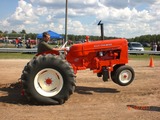
Joined: 13 Sep 2009
Location: EUP of Mi.
Points: 1885
|
 Post Options Post Options
 Thanks(0) Thanks(0)
 Quote Quote  Reply Reply
 Posted: 28 Apr 2012 at 5:23pm Posted: 28 Apr 2012 at 5:23pm |
This is getting scary,' cuz, I agree with mitch on that. Compression ratio is a calculation and thats all it is. Compression pressure is the true measurement of cylinders atmosphereic conditions at the moment of highest compression.
So that we will call fact , mitch, but don't push it.
|
 |
JimD 
Orange Level

Joined: 11 Sep 2009
Location: Mounds, OK
Points: 2116
|
 Post Options Post Options
 Thanks(0) Thanks(0)
 Quote Quote  Reply Reply
 Posted: 28 Apr 2012 at 6:32pm Posted: 28 Apr 2012 at 6:32pm |
|
Didn't see that the opriginal poster asked for compression psi numbers. He asked about ratios. So pankey is answering the wrong question in trying to stat an argument. As usual, he's arguing with himself.
Edited by JimD - 28 Apr 2012 at 6:32pm
|
Owner of OKtractor.com PM for an instant response on parts. Open M-F 9-6 Central. We have new and used parts. 877-378-6543
|
 |
mlpankey 
Orange Level

Joined: 13 Sep 2009
Location: Vols country
Points: 4580
|
 Post Options Post Options
 Thanks(0) Thanks(0)
 Quote Quote  Reply Reply
 Posted: 28 Apr 2012 at 6:53pm Posted: 28 Apr 2012 at 6:53pm |
 JimD wrote: JimD wrote:
Didn't see that the opriginal poster asked for compression psi numbers. He asked about ratios. So pankey is answering the wrong question in trying to stat an argument. As usual, he's arguing with himself. |
forgive me for assuming he wanted more static compression for the cylinder pressure increase that made the power out put differences between said engines. Instead of part counter salesman catalog numbers.
|
 |
JimD 
Orange Level

Joined: 11 Sep 2009
Location: Mounds, OK
Points: 2116
|
 Post Options Post Options
 Thanks(0) Thanks(0)
 Quote Quote  Reply Reply
 Posted: 28 Apr 2012 at 11:26pm Posted: 28 Apr 2012 at 11:26pm |
|
You keep making my point.
|
Owner of OKtractor.com PM for an instant response on parts. Open M-F 9-6 Central. We have new and used parts. 877-378-6543
|
 |
wbecker 
Orange Level


Joined: 29 Oct 2009
Location: STL
Points: 837
|
 Post Options Post Options
 Thanks(0) Thanks(0)
 Quote Quote  Reply Reply
 Posted: 30 Apr 2012 at 11:22am Posted: 30 Apr 2012 at 11:22am |
 ACEd2010 wrote: ACEd2010 wrote:
OK I got tired of the debate and pulled out Dealers Repair Parts Catalog D-26 dated April 1955 and it shows same head and connecting rods. Some differences in crank, but no doubt not different in stroke since that would affect displacement.
Only variation significant to CR were Pistons and Head Gaskets - yes Head Gaskets. On early engines - mostly the 116 CI BE, but also used for the earliest 125 CI variant in the R tractor - they used 2 head gaskets to lower CR for Low Octane (Distillate) fuel.
And the differences in the pistons - as pointed out by another poster would be height from piston pin to top of piston and possibly piston top geometry.
Pistons for early CE Low Octane were 4.7:1 Cast Iron - these would be CE engines with K suffix
Pistons for early CE Low Octane High Altitude were 5.2:1 with both CI and AL variants
Pistons
Pistons for early CE gasoline engines in B & C tractors up to early 1950 were 5.7:1 Cast Iron - presumably these would be the G suffix engines
Pistons for CE gasoline engines in mid 1950 up to s/n CE153961/CR47264 were 5.7:1 Aluminum - presumably the GA suffix engines in early CA and some B tractors
Pistons for late CE gas engines beginning mid-1950 at CE153962/CR47265 were 6.2:1 Aluminum - presumably the PA suffix engines in late CA and B tractors
As for the reasons for CR selection, the Distillate required Low Compression as well as Tractors which did not have Electric Start. Remember some of the early B's were designed to operate on 40 Octane fuel. The early Gas BE engines were only 4.9:1 and the Distillate were 4.6:1. As gas became more consistently higher octane, it was possible to incrementally increase CR and benefit from the increased performance.
Best, Ed
Thanks ED, that's what I wanted.
Bill B
|
|
|
Allis B, IB, Low B, G, D10, JD M, 8KCAB, C152
|
 |









 Topic Options
Topic Options


 Post Options
Post Options Thanks(0)
Thanks(0)



 wbecker wrote:
wbecker wrote:




